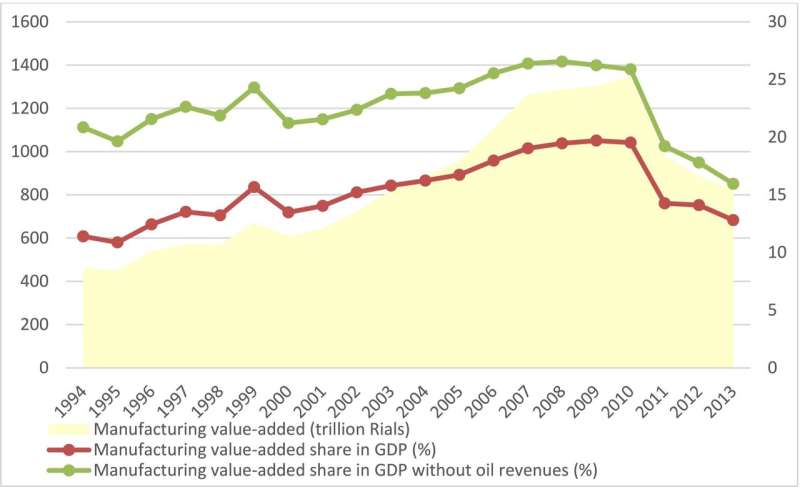
Countries around the European Union are looking at reforms of energy subsidies, to encourage more sustainable energy use and to accommodate the higher prices following Russia’s invasion of Ukraine. These countries should be careful and considerate of the effects these reforms may have on the firms and productivity in these countries, researchers from Radboud University warn. Their study of an energy reform in Iran in 2010, published in Energy Economics, identifies some challenges that can come with such reforms.
The researchers studied the impact of Iran’s energy subsidy reform of 2010, which caused price increases of up to six times for various energy sources. Though the Iranian government decided to redistribute some of the savings from the energy subsidy reform to individual households, this was not nearly enough to compensate for the total increase in prices.
Iranian energy market
“Companies that were less energy-intensive were able to cope with the price increase comparatively well as long as they did not depend on energy-intensive inputs. Yet, energy-intensive companies had a tough time adapting resulting in profit losses,” explains Natascha Wagner, professor of International Economics at Radboud University and one of the authors of the paper. “As a consequence, they increased their prices, which affected households. Households were squeezed from multiple sides: higher prices for their own energy consumption, and for the products and services they use,” she added.
Though Iran obviously presents a very different situation compared to the European energy market, there are a number of lessons relevant to the European Union as it transitions to cleaner energy sources, while managing rising energy prices and inflation.
“The timing of Iran’s reform, which coincided with international sanctions, exacerbated its costs. Europe is in a somewhat similar situation: While it wants to transition to cleaner energy for reasons related to climate, the conflict in Ukraine and the already high levels of inflation put extra pressure on energy prices,” Wagner observes.
Honesty is key
“That means energy reforms in Europe are also likely to come at a non-negligible cost,” adds Wagner. Based on their study of Iran, the researchers recommend taking two things into account: “The main lesson from Iran is that policymakers should be honest about the costs. There’s not just a direct cost, but also an indirect one: once manufacturing companies are affected, we’ll notice that in the price of our goods and services. Transparency about both direct and indirect price increases is key,” they note.
“Energy subsidy reforms are a real balancing act, but we have to be open about that. That does not mean we should not act: the problems we face are real and need to be tackled. We have to be honest that we overexploited fossil energy sources. We’ve been living beyond our means: current prices and subsidies are unsustainable, further price increases can be expected,” the researchers add.
Step by step
Second, governments should reform the market step by step, rather than all at once. A complete overhaul is likely to shock the market and may cause price dynamics that are difficult to counteract.
The researchers state, “Taking smaller steps won’t help avoid price increases completely, but the market will be able to adapt to the price changes better. By supporting households and companies that suffer the most more specifically, instead of supporting everyone a little bit, the biggest pains may be avoided. But in the end, politicians need to have an honest discussion with the public about the many trade-offs and difficulties of the energy transition. This is key for building broad societal support for the necessary but difficult reforms.”
More information:
Zahra Zarepour et al, How manufacturing firms respond to energy subsidy reforms? An impact assessment of the Iranian Energy Subsidy Reform, Energy Economics (2023). DOI: 10.1016/j.eneco.2023.106762
Citation:
Energy subsidy reforms in Europe require honesty and step-by-step approach, study finds (2023, June 29)
retrieved 29 June 2023
from https://techxplore.com/news/2023-06-energy-subsidy-reforms-europe-require.html
This document is subject to copyright. Apart from any fair dealing for the purpose of private study or research, no
part may be reproduced without the written permission. The content is provided for information purposes only.
Stay connected with us on social media platform for instant update click here to join our Twitter, & Facebook
We are now on Telegram. Click here to join our channel (@TechiUpdate) and stay updated with the latest Technology headlines.
For all the latest Technology News Click Here
For the latest news and updates, follow us on Google News.
